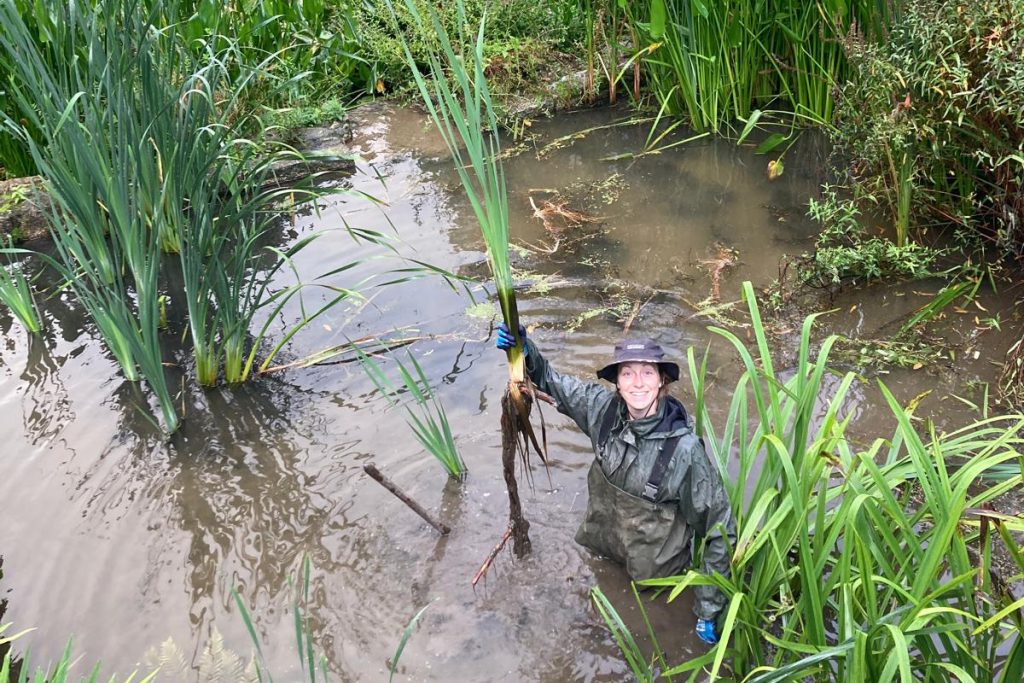The sun has been shining for most of July here in the garden, and although the Hydrangea Valley takes centre stage, there are some other interesting flowers on show this time of year too.
Keeping on a similar theme, the Hydrangea paniculatas dotted around the garden give a slightly different feel to your average macrophyllum. Conical in shape, they almost resemble the face of a mole – long and pointed… maybe that’s just me but next time you see one, take a look and see what you think!
We also have what can be known as the Mexican hydrangea, Clerodondron bungei, looking beautiful just outside the visitor centre. Although not actually a hydrangea at all, and surprisingly not even from Mexico, this delicate pink flower is similar in shape to your standard ‘mop head.’
Spreading like wild flower
When it gets to this time of year, we sadly have to say goodbye to our lovely wild flowers which have graced the banks of the garden since spring. The first thing we do is remove as many of the ‘nasty’ weeds as possible; these are the ones which will only continue to fight back unless uprooted. Our dedicated volunteer team sweep the slopes, removing brambles, docks, bracken and bindweed, making the clearance of what remains much easier.
We then begin the process of strimming to neaten up the areas and prevent the surrounding shrubs from being over taken.
Although strimming can be looked at as a slightly less environmentally friendly option, we see some great benefits. Strimming is an excellent way to distribute seed across the large expanses we cover, working towards bolder, better wild flowers for the coming years.
Unfortunately there aren’t many other options for ground clearance which are practical enough in the environment we work in but we remain cautious when managing the garden and its wildlife
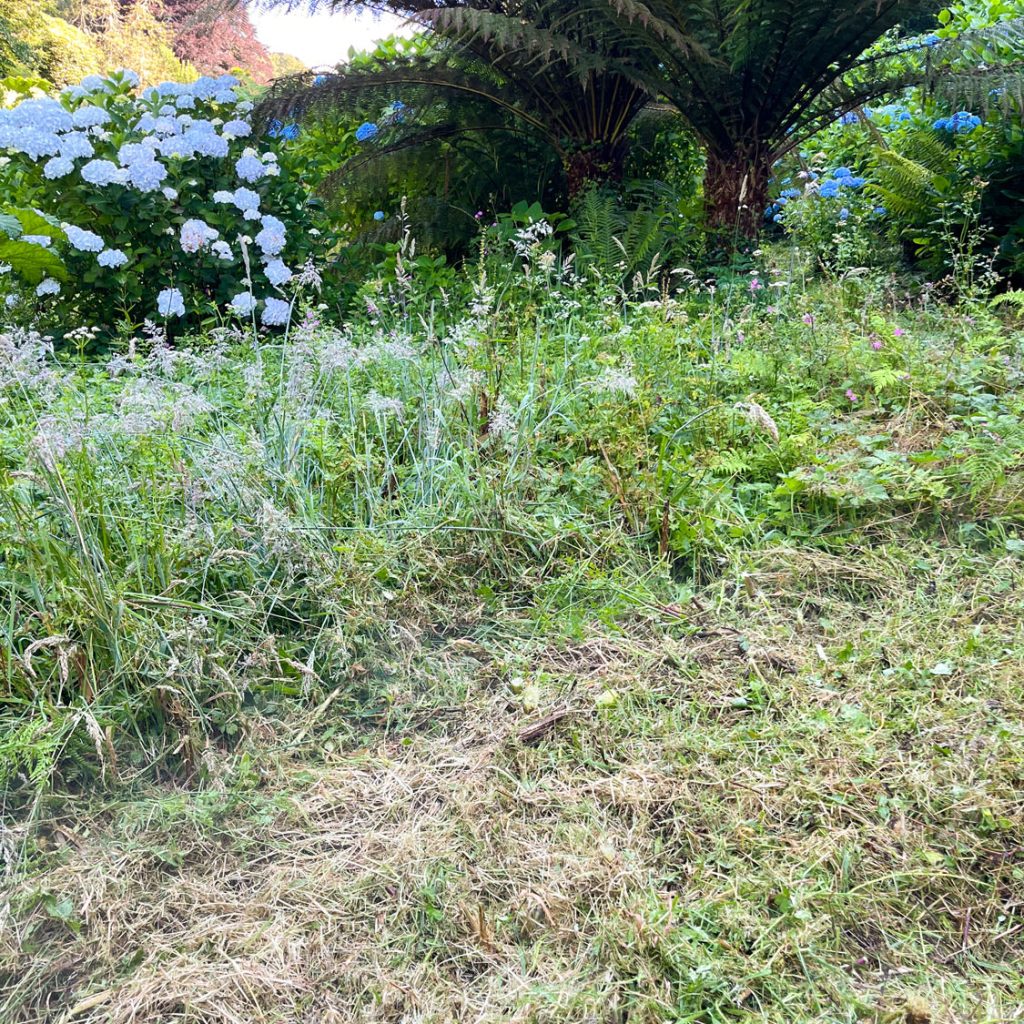
Documenting our collection
If you are a regular visitor to Trebah, you may have noticed on occasion, gardeners carrying clipboards rather than a fork or spade.
We have started the mammoth task of re-labelling the garden to create uniform, informative ID tags of the plants that call our garden home.
Our locally-created labels will display the common and botanical name of each plant, leaving you to enjoy your new found knowledge, or further research the plant when you get home.
We are only just in the initial phase of labelling, so please bear with us. More will be coming to help you to identify all your favourite shrubs and trees.
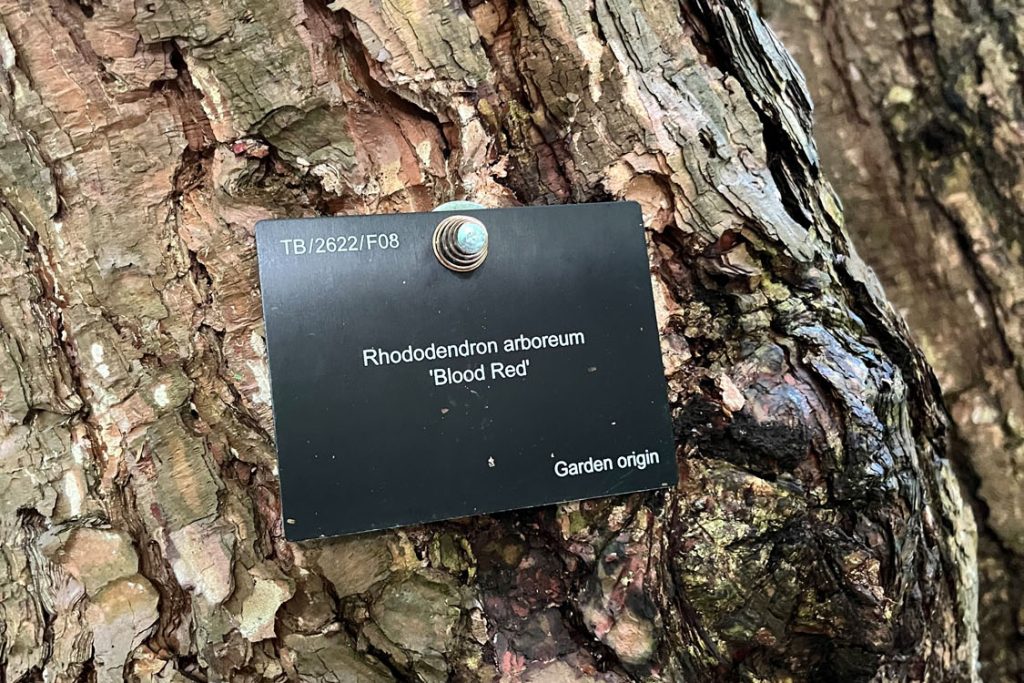
There’s always pruning
We have been busy this month doing some daily hard pruning of different shrubs along Badger’s Path.
The Philadelphus looks stunning draped over, almost tunnel-like, but can become heavy and brittle once drenched in winter. It’s undergone a good cut back but will begin to re-shoot late spring.
We have also lowered the patch of Rhododendron luteum to maintain the view of the valley from Petry’s Path. Wayward flower stalks have been trimmed off and the whole shrub has been pruned to ensure it remains a manageable size.

Gunnera management
With the long dry spell for the first half of the month, our Gunnera hasn’t been as happy as it should be. Native to South America, these moisture-hungry plants don’t take well to dry soil and can become weak and floppy. Each day we walk through the Gunnera Passage checking for slumping stems and collapsed casualties.
Wonderful Wildlife
For those of you who are regular readers, you’ll be familiar with ‘Barry’ our resident and very confident Buzzard. He has been spotted a lot this month in some unusual spots round and about the house and garden. He tends to hang around the gardeners when strimming to get an easy meal.
If you see him, please give him plenty of room. He seems to be a real poser but we want him to continue to feel safe in our garden and to keep his trust so we can keep experiencing these rare close encounters.
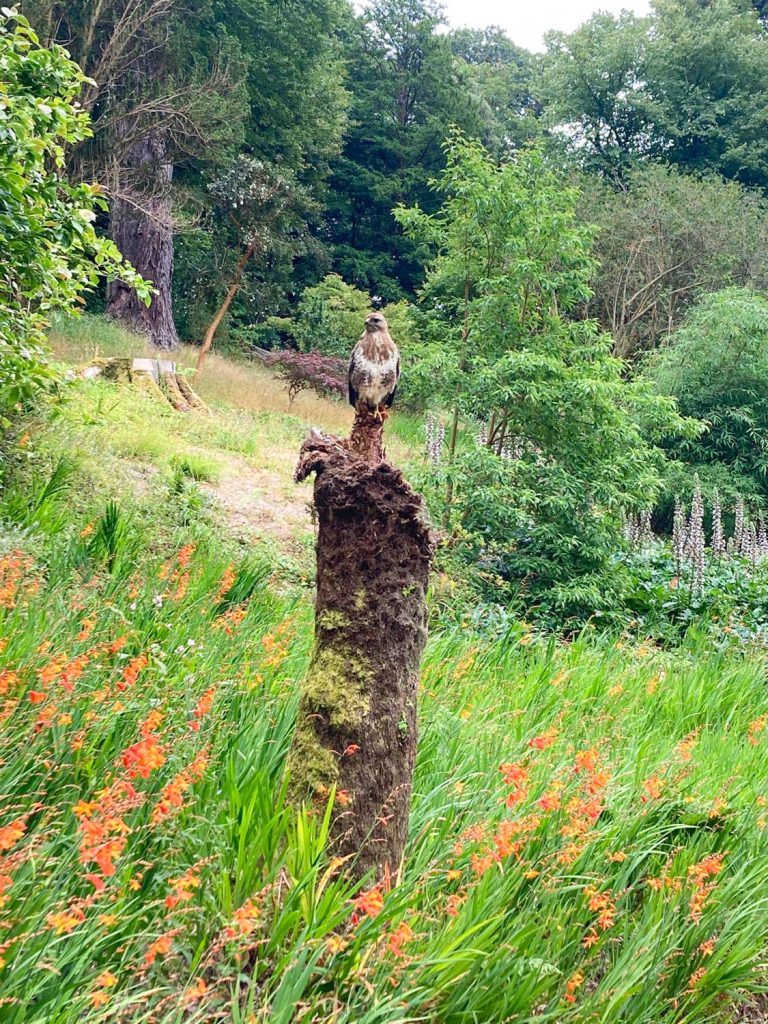

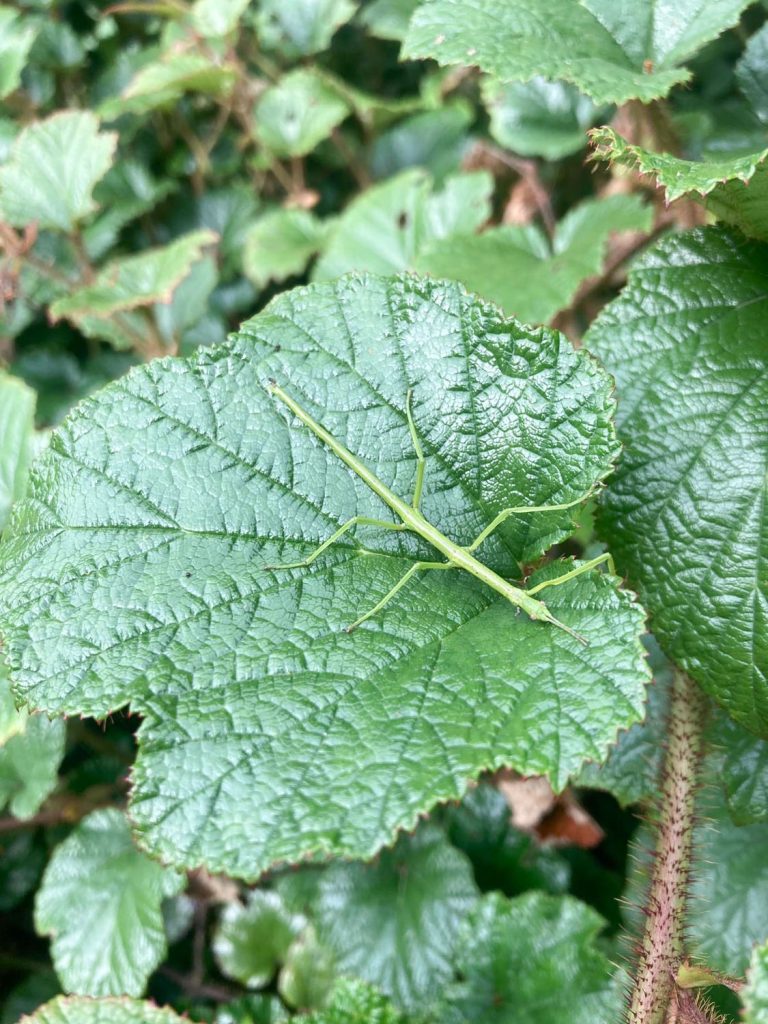
Wildlife sightings
- Buzzard
- Jay
- Stick insect
- Toadlets

